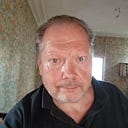Heisenberg Uncertainty as a Source of Information
In quantum mechanics we mentally separate a system of our interest from the rest of the world. We and our instruments represent the rest of the world in quantum mechanical measurement [1].
We (including the rest of the world) intentionally interfere with the system of our interest by measuring it. The disturbance of the system with our measurement produces Heisenberg uncertainty. Presence of Heisenberg uncertainty is mandatory to obtain the wave function of the system of our interest. No uncertainty — no wave function [1].
With the wave function we obtain a component of objective information — the ensemble of all states in which the system of our interest can be observed and a component of subjective information — probability estimates for observing each state from the ensemble [1,2].
A subjective component reflects our knowledge of the system as accounted for in the wave function. Therefore, it’s subjective [1].
An objective component is derived from an ultimate source of information — Heisenberg uncertainty. In classical information theory a source of information is defined as a stochastic process with a finite ensemble of initially known discrete states. The speed of production of information is measured with entropy. The higher the entropy the faster is the speed of production [3].
In the case of Heisenberg uncertainty, states aren’t known before we obtain the maximal ensemble of them from the wave function [1,2]. It looks like Heisenberg uncertainty is a very powerful source of information that produces it almost instantly compared to a classical source.
It might appear as if with measuring elementary particles we don’t have a choice to interfere or not because any physical interaction (with even one quantum of light) already disturbs a microscopic system of our interest. Yet we make a choice to measure or not to measure that is equal to the choice to interfere or not to interfere.
Dealing with macro systems in an experimental setup it’s entirely up to our choice if we want to disturb the object of interest with our measuring activity or not. In real life we constantly interfere with different systems of our interest surrounding us. We look like separate agents active inside the rest of the world. At least it appears to be so in the classical world picture.
In the quantum mechanical world picture our interactions with the environment are seen as a sequence of measurements performed by the rest of the world on a variety of systems of interest, sometimes measuring the same system several times.
We (the rest of the world) poke an object and if it wobbles an invisible concentric wave comes from it through the rest of the world envisioning their (our) future interactions. We can model that wave with the wave function. Heisenberg uncertainty provides the object the space for wobbling.
References:
- Heisenberg, Werner. Physics and Philosophy — The Revolution in Modern Science. 1958. Harper & Brothers Publishers, New York.
- Schrödinger, Erwin, The Present Status of Quantum Mechanics, Die Naturwissenschaften 1935. Volume 23, Issue 48.
- Shannon, C. E. “A mathematical theory of communication,” in The Bell System Technical Journal, vol. 27, no. 3, pp. 379–423, July 1948, doi: 10.1002/j.1538–7305.1948.tb01338.x.
